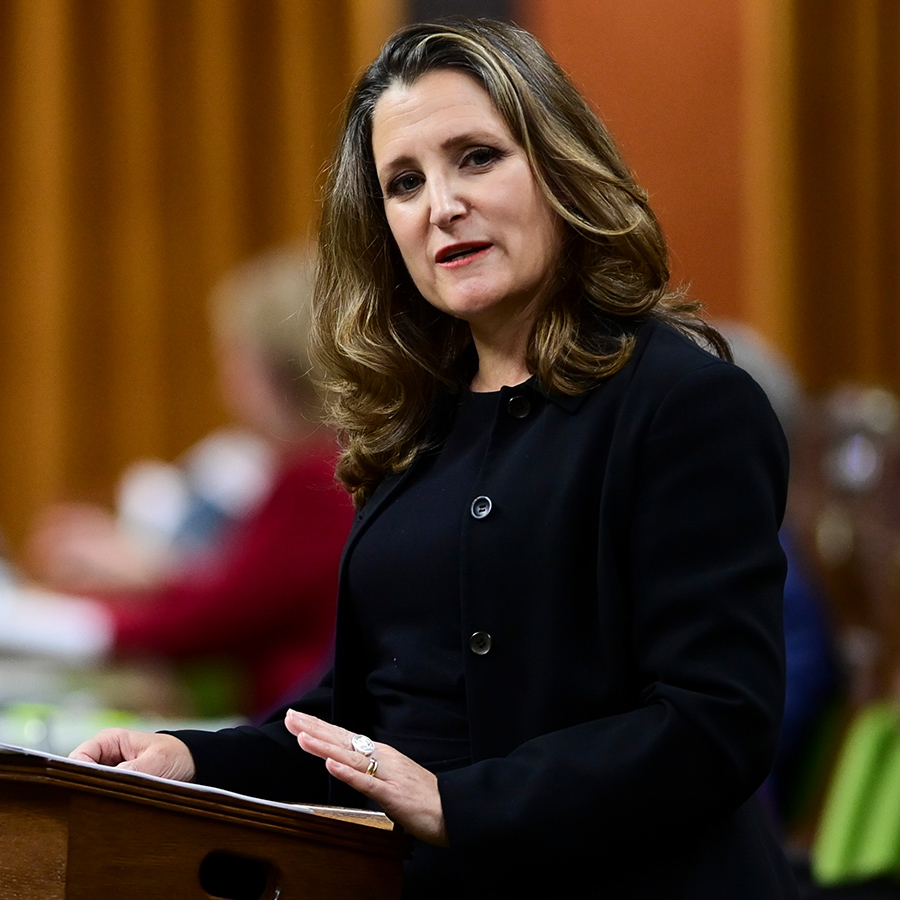Liberal Government’s $100 Billion “Election Budget” Has Something for Everyone, Including Seniors

Chrystia Freeland, seen here in 2020, delivered her first federal budget as Minister of Finance on Monday, outlining a plan that contains new spending measures aimed at older Canadians. Photo: THE CANADIAN PRESS/Sean Kilpatrick
This year’s federal budget is a far-reaching document that contains $100 billion in new spending to help families, small businesses and commercial sectors slammed by the pandemic.
And with gifts for almost every key interest group, it’s a classic “election budget” that foreshadows the possibility that Canadians will be returning to the ballot boxes in the near future.
In her speech to the House of Commons after presenting her first budget as Finance Minister — and the first government budget in two years — Chrystia Freeland spoke about the deadly effect the coronavirus had on older people, especially those living in long-term care, and outlined several spending measures her government was taking in order to help ensure it won’t happen again.
“Our elders have been this virus’s principal victims. The pandemic has preyed on them mercilessly, ending thousands of lives and forcing all seniors into fearful isolation,” said Freeland, who is also Deputy Prime Minister. “We have failed so many of those living in long-term care facilities. To them, and to their families, let me say this: I am so sorry. We owe you so much better than this.”
Measures Aimed at Seniors
In an election budget that contained a gift for almost every interest group, the new spending measures aimed at older Canadians include:
- Increasing Old Age Security for seniors age 75 by more than 10 per cent and a one-time payment of $500 in August 2021 to OAS pensioners who will be 75 or over as of June 2022
- $3 billion over five years, starting in 2022-23, to Health Canada to support provinces and territories in ensuring standards for long-term care are applied and permanent changes are made
- $41.3 million over six years, and $7.7 million ongoing, starting in 2021-22, for Statistics Canada to improve data infrastructure and data collection on supportive care, primary care, and pharmaceuticals
- $90 million over three years, starting in 2021-22, to Employment and Social Development Canada to launch the Age Well at Home initiative, which would assist community-based organizations in providing practical support that helps low-income and otherwise vulnerable seniors age in place
Bill VanGorder, CARP’s Chief Policy Officer, said he was pleased that seniors had not been “totally forgotten” as they had in previous Liberal budgets. And he was encouraged by some of the spending measures directed at long-term care, saying these commitments demonstrated the government’s support and understanding of the health and well-being issues that seniors are facing.
Budget Highlights
Prime Minister Justin Trudeau said that the budget includes “historic investments to finish the fight against COVID-19, create good jobs, grow the middle class, and support workers, families, and business owners.”
Highlights of the budget included:
- $101.4 billion in new spending measures
- Canada’s deficit for 2020-2021 will be $354.2 billion
- The deficit will shrink in 2021-2022, to $154.7 billion
- Extension of the Canadian Emergency Wage Subsidy, Canada Recovery Benefit and the Canada Emergency Rent Subsidy
- $30 billion in spending over the next five years for a national child-care program
- $18 billion in spending over the next five years to improve education and infrastructure of Indigenous communities
- $8.75 billion for the development of green technologies
- $595 million for the Canada Hiring Program, a job creation measure
- $916 million to life sciences and biomanufacturing to support made-in-Canada drug and vaccine development
While Conservative Leader Erin O’Toole described it an “election-style” budget and has proposed amendments, the NDP has already served notice that it will support the budget, guaranteeing its passage.
RELATED:
Trudeau Warns that “Second Wave is Underway” While Opposition Critique His “Build Back Better” Plan
Throne Speech: Big Investments for Youth, Women and Racialized Groups, Not Much for Older Canadians